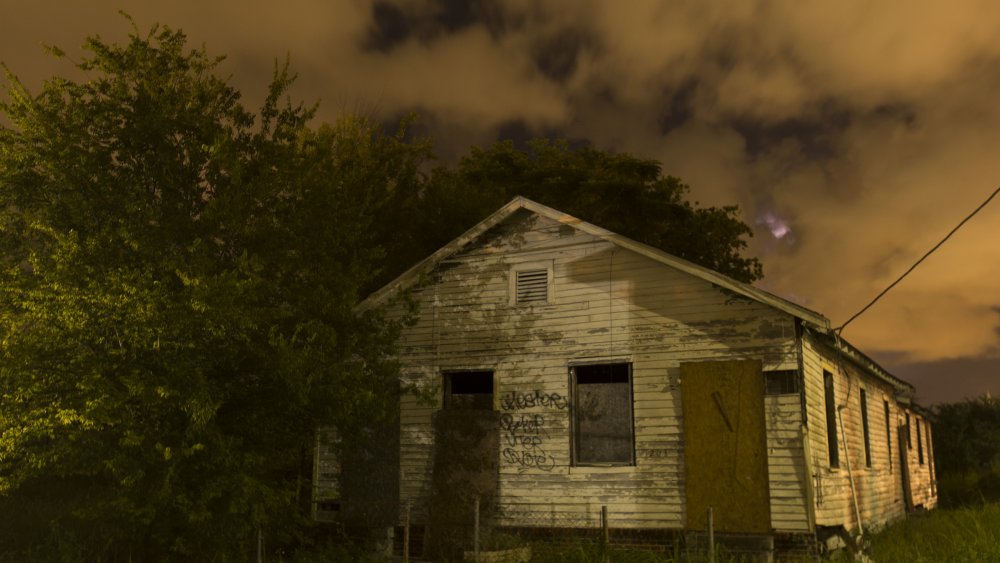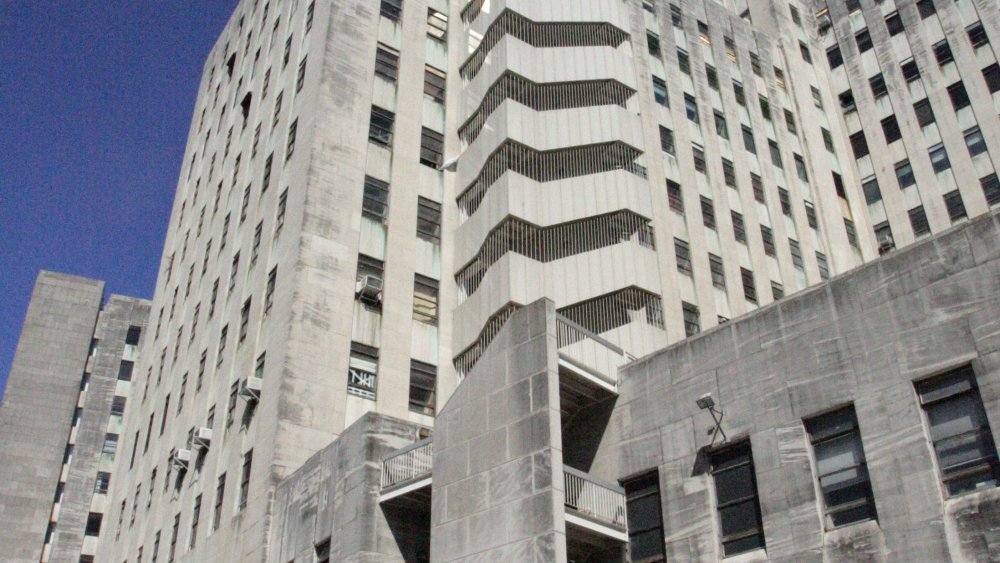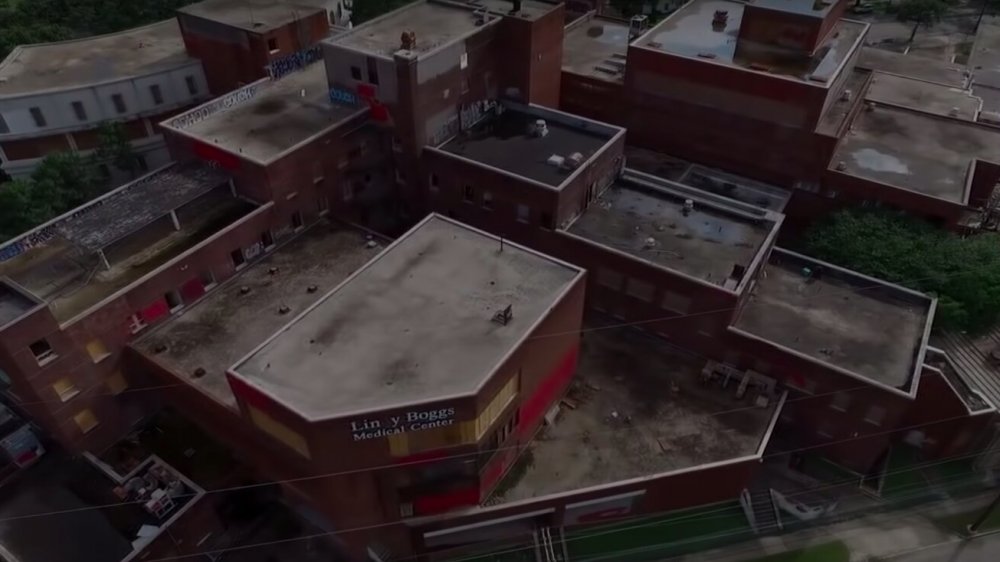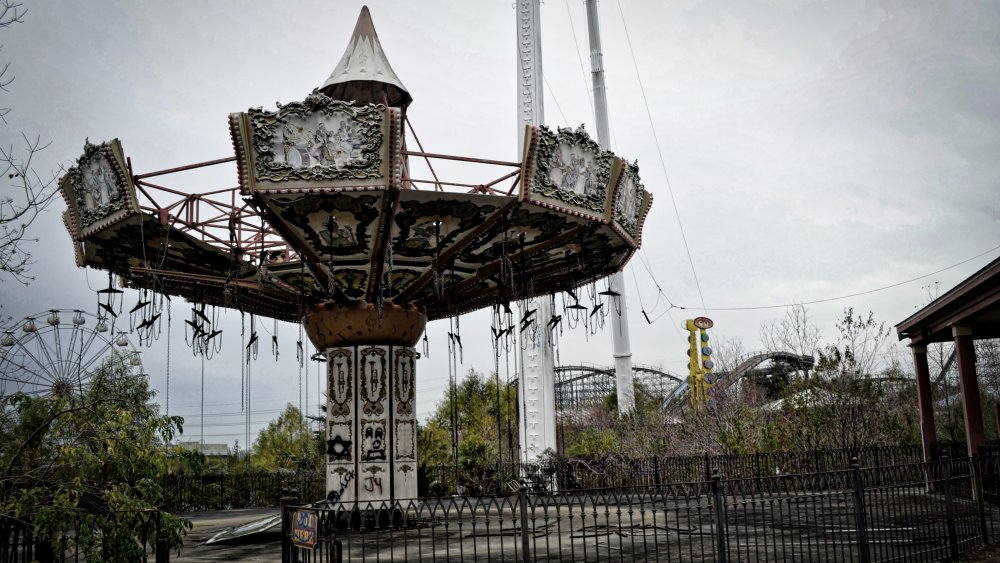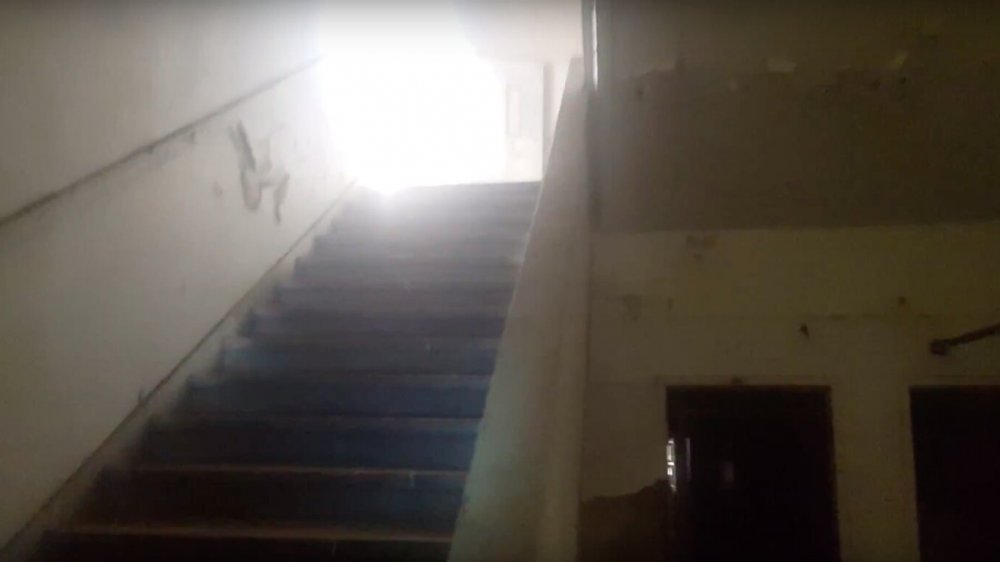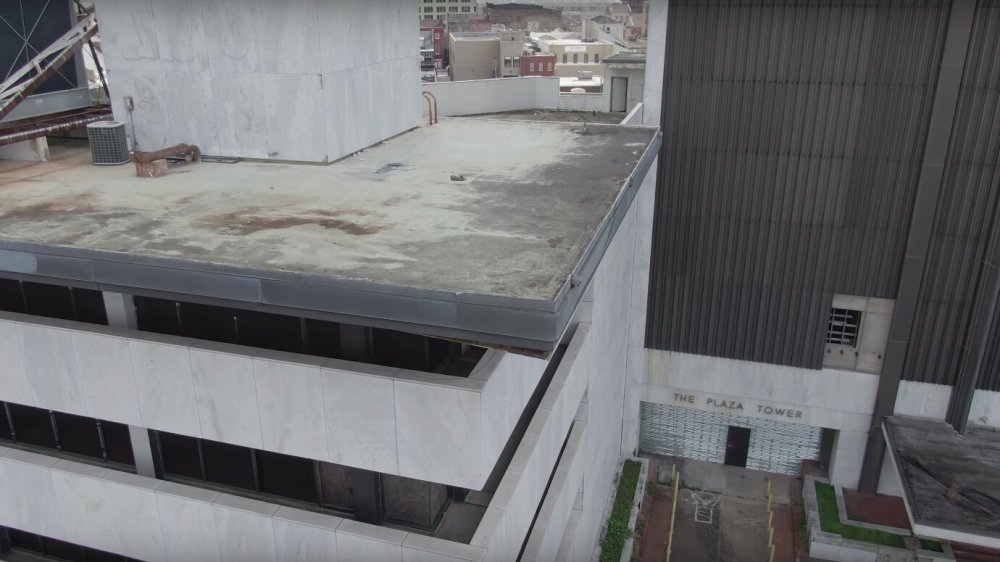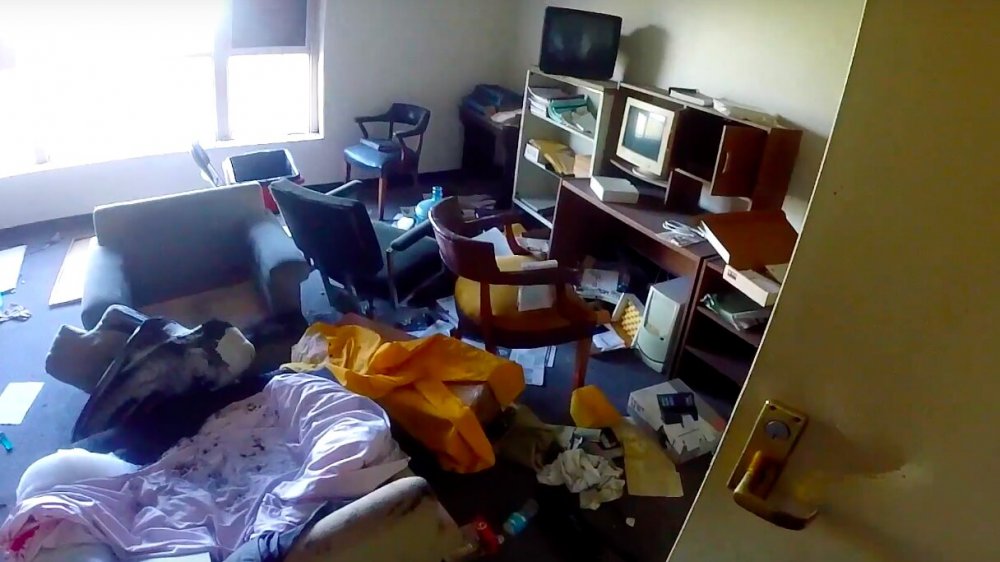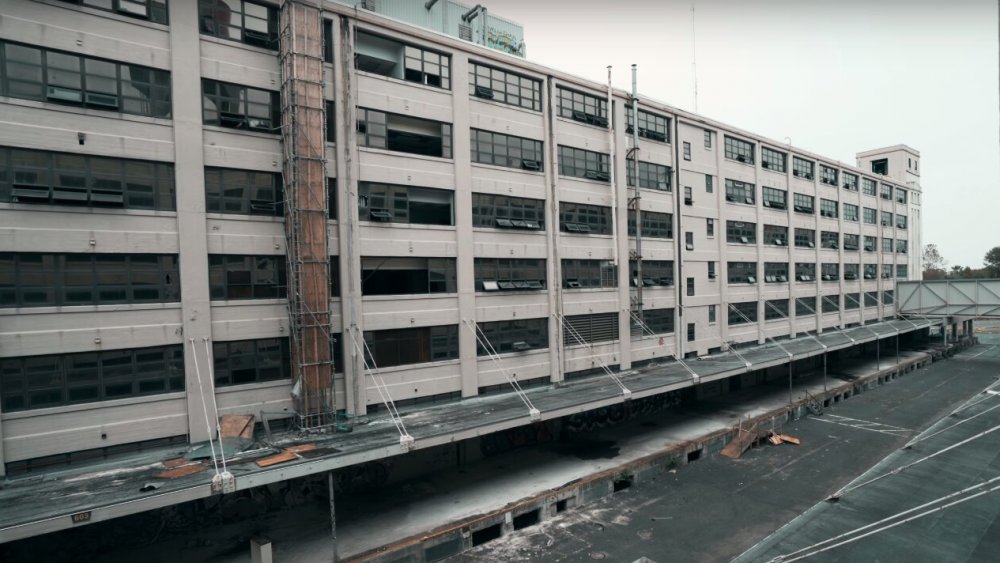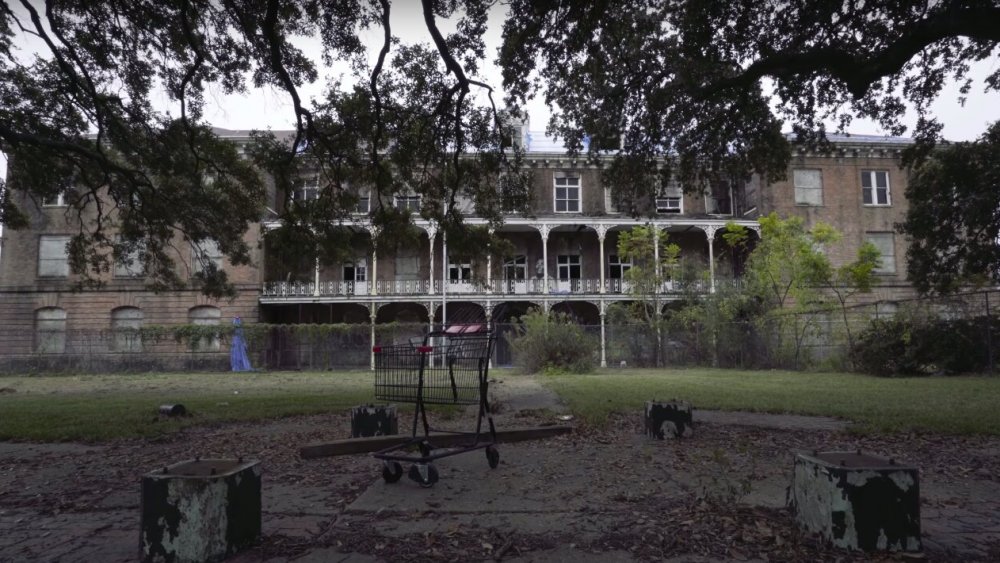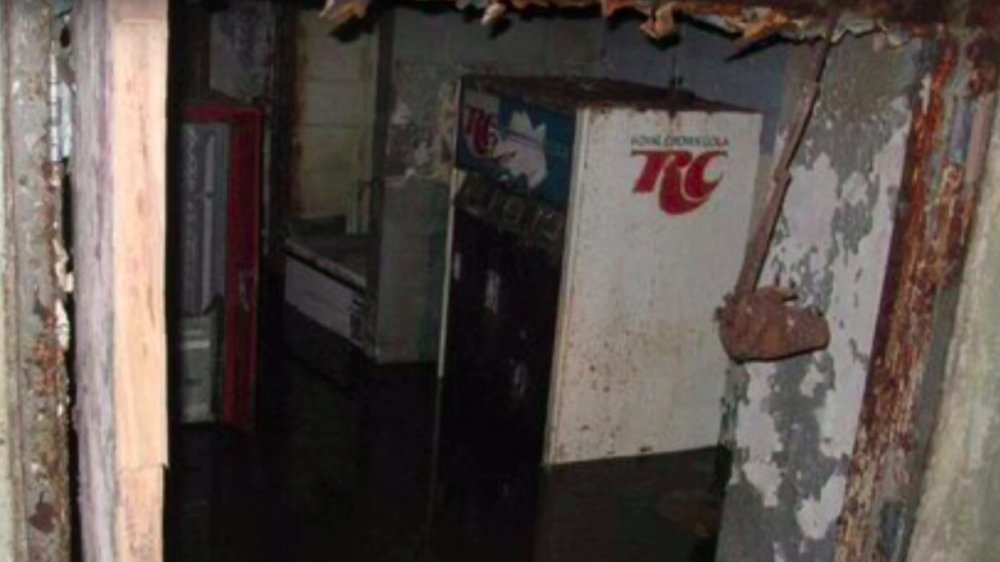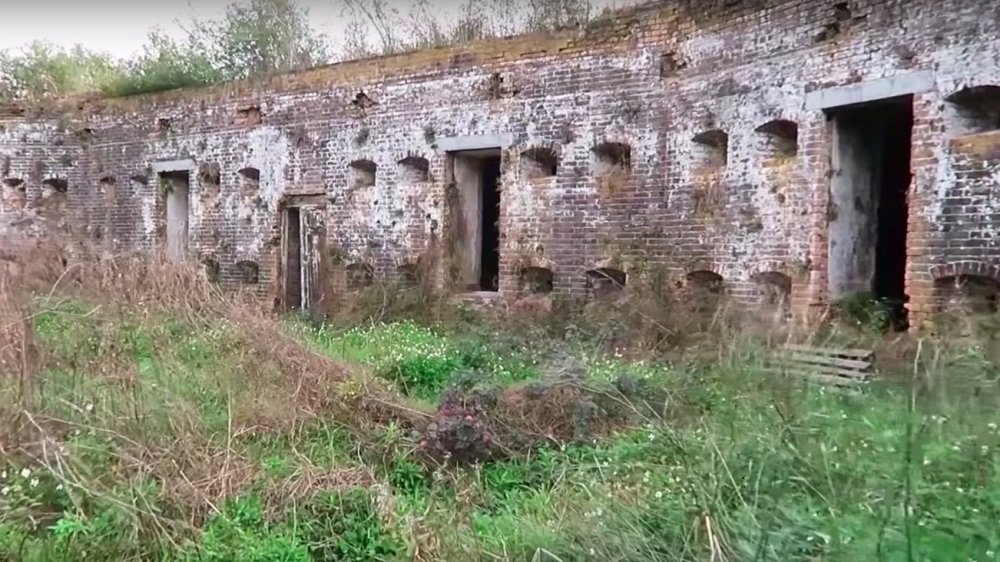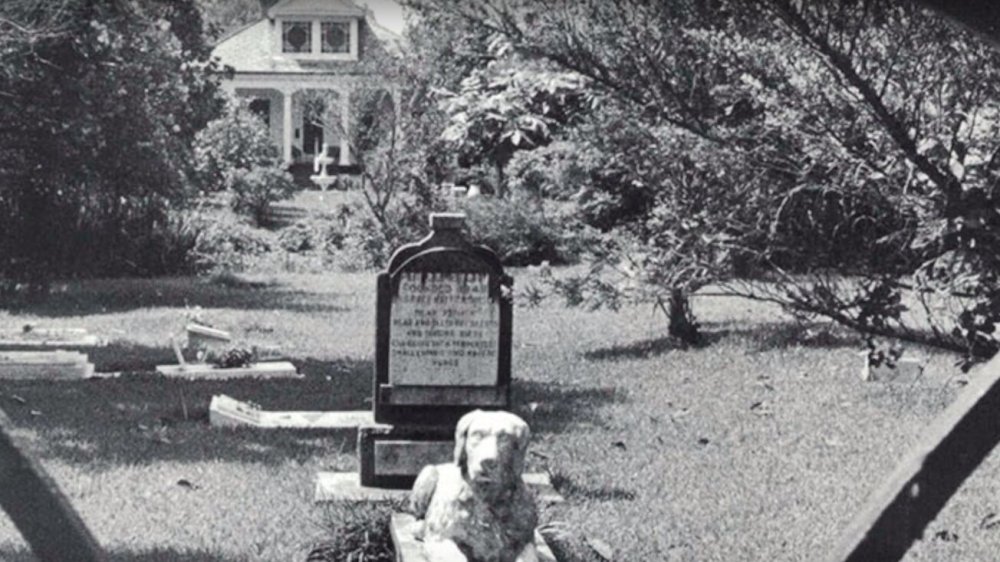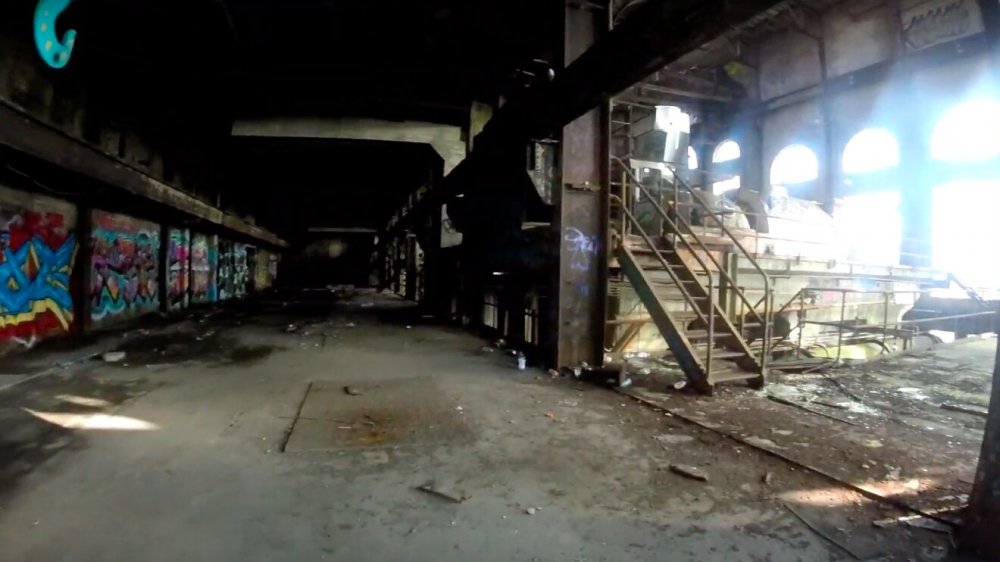Creepiest Abandoned Places You'll Find In New Orleans
In 2005, Hurricane Katrina flooded New Orleans to such a degree that many years later, the city has yet to fully recover, and likely never will. Even before the storm made landfall, it was doing a number on the city's flood protection methods. Before the battering ceased, New Orleans suffered 50 failures of the levees and flood walls, resulting in 80 percent of the city under water. When you think of flooding, you may be picturing a flooded basement, or flooded garage with water up to your ankles and a few ruined boxes. No. During Katrina many parts of the city and surrounding areas saw flooding that reached to the top of the average sized house. This was total devastation.
At the end, thousands of people lost their lives, and billions of dollars in property damage was left to deal with. With each year that's passed, things have slowly returned to normal, but New Orleans will never be completely the same again, and there are still many reminders of the storm to be found. All throughout the city, in between renovated homes and new construction, loom massive structures abandoned and rotting, reclaimed by the elements. Like ghosts of a New Orleans that once was, but will never be again.
New Orleans' Charity Hospital keeps a light on
Established in 1736 by a French shipbuilder, Charity Hospital was supposed to be, as you could probably tell by its name, a hospital for the poor. In 2005, when Hurricane Katrina hit New Orleans, the hospital flooded, which according to CNN including the basement morgue, which meant bodies of locals' loved ones had to be stored in stairwells. During the worst of the hurricane up to 200 doctors and patients became trapped in the hospital with no electricity. Ventilators had to be worked manually via hand pumps, and it's said to have taken almost a week following the storm for everyone to be evacuated.
AP reports that since 2005 there have been plans to turn the building into a hotel, retail outlets, a museum, or apartments but as of 2019 it remains vacant. Naturally, such a large building, left unattended for so many years, it's developed a creepy, even haunted appearance. In 2015, locals began noticing eerie lights shining from broken out windows within the hospital. After police investigated they determined that "trespassers" had made a makeshift Christmas tree. Somehow that doesn't make it any less scary.
Lindy Boggs Medical Center remained flooded for years
The area of New Orleans known as Mid-City has seen tremendous amounts of development since Hurricane Katrina, but one massive monument of destruction still remains. According to a local news station, Lindy Boggs Medical Center, which stands in close proximity to shiny new doggy day care facilities and beer gardens, has sat vacant since the disaster.
Founded in the 1920s, the former 187-bed acute care hospital is now surrounded in chain-link fencing, with the windows boarded up, in an effort to keep out squatters and vandals. The efforts don't work very well. In 2019, local news reported firefighters were alerted to smoke coming from the abandoned hospital, and after arriving to inspect the scene, found that a squatter had been setting objects on fire on one of the hospital's lower levels, parts of which were still flooded with stagnant water from years before.
Since Katrina hit in 2005, many different developers have proposed plans for the site, but they've all come to dead ends for one reason or another. As of 2019, it's said that a new developer plans to renovate the facility into senior housing, but it will have to be seen to be believed.
Abandoned Jazzland is now home to different species of dangerous animals
Originally called Jazzland, this large amusement park opened in 2000 and is located in New Orleans off of interstate 10. Owned by a Spanish company called Parques Reunidos, Jazzland fell into financial distress shortly after opening and was purchased by Six Flags in 2002. Built with New Orleans' damning weather conditions in mind, Abandoned Southeast says the new park featured rides like the Mega Zeph, built on a steel frame to handle termite infestations and hurricane force winds. There were also plenty of rides named in reference to New Orleans music and culture, such as the Zydeco Scream roller coaster.
In 2003, the park was renamed Six Flags New Orleans and many new larger scale rides were added in. In 2005, the park was working on, ironically, a waterpark addition when Katrina hit, causing the park to become submerged in seven feet of water in some areas. The theme park never opened again and still remains where it stood, vacant and crumbling, home to animals like alligators, wild hogs, and snakes.
During the years following Katrina many plans were made by different developers to do something with what remained of the park, but nothing ever panned out. As of 2019 NOLA.com reported it was marked for possible demolition but until it's leveled to the ground, Six Flags New Orleans remains a point of curiosity for brave explorers, and filmmakers with pockets deep enough to obtain permits and insurance to film there.
Israel Meyer Augustine Middle School has an interesting way of keeping people out
Opened in 1913, Israel Meyer Augustine Middle School is a 81,931 square foot building that is one of many to be taken out of commission by Hurricane Katrina in 2005. Amazingly, aside from security fencing, and boarded up windows, the exterior looks like any other normal school. According to NOLA. com, the inside, however, is a different story. The crumbling walls, water marks, and exposed wiring in the school's interior reflect the full damage caused by Katrina.
Louisiana state law says that charter schools have first dibs on buying any vacant surplus properties, such as this one, but the $7 to 10 million it would cost to renovate the building has kept everyone at bay, so it's left to just sit in ruin.
In 2017, a group of amateur explorers who call themselves the Urban Exploration Team toured the abandoned school but were spooked away by an automated warning message that they later realized was probably an attempt to keep vandals away from the school's priceless murals.
Plaza Tower is the tallest abandoned building in New Orleans
Plaza Tower, a 45-story skyscraper completed in 1969, is one of the first of its kind to be built in New Orleans. Local news reports it was located on an avenue developers hoped would become the city's financial center, their plans crumpled when the main hub ended up elsewhere, leaving Plaza Tower isolated and underused. Occupants of the building began to vacate in a steady stream, favoring more bustling properties elsewhere, and fleeing the "asbestos and toxic mold," leading to the skyscraper becoming one of the few buildings to become vacant prior to Hurricane Katrina, and not after.
In 2005, the building was purchased by a developer with plans to turn it into condos, but Katrina put a permanent halt to that. According to NOLA.com, in 2007, it was bought out by yet another developer who tried to offload it for $15.5 million and failed. It sold for just $650,000 at auction in 2011. In 2014, the building was purchased yet again, but still sits vacant, with no signs of moving forward on any manner of renovations any time soon.
Municipal Auditorium has become a fancy squat house
Municipal Auditorium is a five-story, Italian Renaissance-style limestone building that dates back to 1930. According to the Preservation Resource Center of New Orleans, original designers Favrot and Livaudais left no detail out when crafting the structure's three stone porch entrances, bronze doors, and marble floors, making it that much more a shame that it's been abandoned since Hurricane Katrina. Once the go-to site for fancy Mardi Gras balls, Municipal Auditorium took on five feet of water during Katrina and was closed down after the storm, in need of costly repairs that never took place.
Vacant for as long as it has been, the site has become a popular one for squatters and vandals. In 2017, after receiving numerous complaints from locals living near the Auditorium regarding illegal activity within the building, the city took extra measures to secure it. The addition of steel panels to the doors, windows and air conditioning units, along with a 24-hour security detail slowed the trespassers down a bit, but people still find a way in.
The city has been in on-going battle with FEMA for the funds to renovate Municipal Auditorium. FEMA's original offer of assistance was in the paltry amount of $7 million, which over the course of many back and forth conversations got raised to $41.7 million, still about half of what it would take to bring the once gorgeous building back to life. Until it happens, it remains a makeshift shelter for the city's castaways and vagrants.
The Poland Avenue Navy Base has become a drug den
Located in the Bywater area of New Orleans, the Poland Avenue Navy Base once housed 3,900 active-duty and 2,700 civilian personnel, according to Abandoned Southeast. In 1933, the base was placed in maintenance status by the U.S. Army, which was the beginning of its degradation. A year after the base was cleared of standard military use, The Louisiana Emergency Relief Administration reopened it to use as housing for nearly 25,000 New Orleans residents suffering hardships as a result of the Great Depression.
In 2005, the Defense Department halted all naval activities at the base for good when the Navy moved its headquarters to Virginia, and the base was shuttered. Since then it has widely been taken over by the homeless and vandals. NOLA.com reports that in 2013, ownership of the base was transferred over to the city of New Orleans, with plans to redevelop it as a disaster and emergency response center, but no progress to that effect has been made.
As of 2019, the base remains vacant and abandoned, much to the displeasure of locals who live in the area who often complain of illegal activity like trash fires being set off on the base, and rampant drug activity.
New Orleans' Holy Cross School is hauntingly vacant
According to Abandoned Southeast, Holy Cross School has a rich and lengthy backstory that traces all the way back to 1837 when Congregation of Holy Cross was founded. In 1849, after New Orleans had been hit with cholera, yellow fever, and malaria outbreaks, the Archbishop of New Orleans invited a few brothers of the Congregation of Holy Cross to come look over a local orphanage. Ten years later, the brothers would purchase land on a riverfront plantation that would come to be the original site of Holy Cross School.
The original Holy Cross School campus was devastated during hurricane Katrina, so in 2007 the congregation opened a new school in nearby Gentilly. The original school, however, stands where they left it. Abandoned and in ruins.
In 2018, NOLA.com reported plans to turn the former school into mixed-income housing, but the historic building remains untouched. In 2019, a blogger for the site Sheednomics explored the interior of the abandoned school and took many photos showing books, and even musical equipment strewn hauntingly about the hallways.
An abandoned underground bunker in New Orleans has held up since 1962
In a city built like a soup bowl, it's hard to imagine any structure surviving under ground. New Orleans is six feet under sea level, on a good day, which means that certain planning specifications need to take place that other cities don't have to concern themselves with. Houses are built raised a few feet off the ground, the dead are laid to rest in above ground tombs to keep them from popping up like champagne corks through the marshy soil. And yet somehow, a historic underground bunker has held up since 1962.
NOLA.com reports the New Orleans Civil Defense Emergency Operations Center, located between Pontchartrain Boulevard and West End Boulevard, opened in 1962 to house city officials and law enforcement leaders in case of a nuclear attack. Abandoned two decades ago, it is now no more than a point of curiosity for explorers who don't mind getting their feet a bit wet.
Inside the bunker, things appear to be much the same as they were in the 60s, aside from quite a bit of graffiti. Filing cabinets are still filled with documents, and vintage RC Cola and Campbell's Soup cans are strewn about.
The Real 'Carcosa'
Fans of True Detective season one might have wondered if the terrifying swampy underworld referred to as "Carcosa" is an actual place. It is.
Fort Macomb, located along Chef Menteur Pass in New Orleans, is the abandoned military fortress used as the filming location for "Carcosa." Garrisoned in 1828, NOLA.com reports it was occupied by Confederate troops at the beginning of the Civil War, and abandoned when the Union captured New Orleans in 1862. After the Confederate army vacated Fort Macomb, it was taken over by Union Lt. Col. O. W. Lull and also occupied by the Union Army's first all-black units.
A fire in the barracks in 1867 led to Fort Macomb being taken out of commission and it's stood vacant ever since. In 1978 it became listed in the National Register of Historic Places, but remains closed to the public, although very easy to get into. The site is a popular one for adventure seekers, photographers, and fans of True Detective. It's also been the site of covert weddings, and Beyonce's Lemonade.
An abandoned pet cemetery with a murderous past
In 1985, Dorothy Thompson, owner of the Azalea Original Pet Cemetery, went missing from New Orleans. According to news reports, she was last seen at the bank, but where she went from there was anyone's guess. Weeks after Thompson was reported missing, her body was discovered in the Mississippi River tied with steel chains, with a plastic bag around her head. An autopsy concluded that her cause of death had been suffocation, not drowning, which means the body of the 63-year-old pet lover was merely dumped there like trash. At the time, police were unable to apprehend a suspect in Thompson's murder, and the case went cold for many years.
The pet cemetery was willed to Thompson's executors, but they didn't carry out her wishes to keep it operational, and allowed it to fall into ruins. Since Thompson's death, the cemetery has become a spot for teens to hang out and scare each other with tales of Thompson's death and her own murderous past there. NOLA.com reports Thompson, in an eerie twist, shot and killed her own abusive husband on the property years prior to her own murder there. She later remarried, and that husband was also shot and killed there though, according to Thompson, not by her.
In 2012, a man named Brandon Nodier turned himself in for the murder of Thompson, solving the mystery of the long running cold case. Nodier had worked for Thompson, maintaining the property and building tombstones for the pet cemetery. His motive for killing her was to get control of her land, which didn't end up working out for him very well.
New Orleans' Market St. Power Plant has been abandoned for 40 years
Built in 1905, the Market St. Power Plant supplied power for New Orleans up until 1973, according to Abandoned Southwest. The plant operated by burning coal, and then cooling it using water pulled directly from the Mississippi River. In 2007, Entergy sold the plant to Market Street Properties for $10 million and there was talk of using the land for residential purposes, but the they went bankrupt in 2009. In 2015 the plant was sold again, with more high hopes of development passed around, but still, nothing.
In 2019, local news reported a business owner operating near the plant noticed black smoke coming from it and was concerned about toxic smoke. Officials went to the site and discovered that some homeless people had started a fire inside to keep warm, which is often the cause of reported fires in abandoned buildings in New Orleans.
The plant has been repeatedly cited for code violations, and is known to be filled with toxic chemicals, which can't be good to have in close proximity to thriving bars and restaurants frequented by both locals and tourists.
